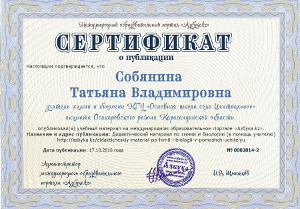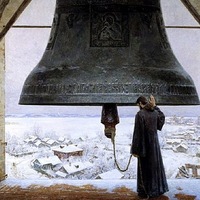Theme of the lesson: «A tradition of tea-drinking. The Present Simple tense»
|
Канафина Валентина Николаевна, преподаватель английского языка, высшая квалифицированная категория, «Петропавловский строительно-экономический колледж», город Петропавловск, Северо-Казахстанская область |
Цель: формирование лексико-грамматических умений и навыков студентов по теме урока
Задачи:
А) обучающая: ознакомить студентов с новой лексикой, обеспечить ее первичное усвоение, продолжить формирование навыка употребления студентами настоящего неопределенного времени в устной и письменной речи, обучить аудированию и чтению текстов профессиональной направленности по теме урока
Б) воспитательная: прививать чувство гордости за традиции Казахстана, традицию чаепития, воспитывать уважение к традициям чаепития других стран
В) развивающая: развивать внимание, логическое мышление, память, расширять кругозор студентов
Тип занятия: комбинированный урок
Методы обучения: практический, объяснительно-иллюстративный, коммуникативный, интерактивный, игровой, самостоятельная работа
Материальное оснащение: ксерокопии текста для аудирования и чтения, словари, рабочие тетради, грамматические и лексические карточки, интерактивная доска
Языковой и речевой материал: текст для аудирования, новая лексика по теме, видеозапись для просмотра и прослушивания, слайды для просмотра
Межпредметные связи: технология приготовления пищи, информатика, основы экономики
Ход урока:
1. Вводно-мпотивационный этап
1. — Good afternoon, students! — Sit down, please. — Let’s begin our lesson. — Who is on duty today? — What date is it today? — What day is it today? — What day was yesterday?- What day will be tomorrow? — How many lessons have you today? — What’s your favorite subject in college? — What’s your favorite seasons? — What’s the weather like today? — Is it cold today? -Have you drank tea or coffee for breakfast?
2. Phonetic drills:
— Molly, my sister and I was fell out
And what do you think it was about?
She loves coffee, and I love tea,
And this is the reason
We could not agree.
II. Проверка домашнего задания
1. Описание тортов и пирожных, конфет с содержанием какао и шоколада.
III. Изложение нового материала
1. Презентация темы урока.
2. Введение новой лексики по теме. Фонетическая отработка звуков
• Available — необходимый embraced — охватывать habits — привычка
• Brewed — заварка vessel — сосуд monk — монах
• Ranging — располагаться considered — считать shape — форма
• Cherished — лелеять beverage — напиток entire — уместный similar — схожий consume — потреблять ability — способность
• Urn — емкость bowl — пиала coals — уголь
• Clover — клевер verbena — вербена verveine — душица
• Indulged — потворствовать spread — простираться desired — стремление
• Fennel — шиповник elaborate — искусный cream — сливки chamomile — гвоздика mint — мята fills — наполнять
2. Аудирование текста о чаепитии разных стран.
Tea drinking in different countries
Tea-drinking is the tradition of many people and nations. The first mention of tea is from Chinese books. Tea was considered as a medicinal staple. It was also a general health tonic. Today in China the importance of tea in daily life is usually evident at the table. Tea is one of the most important parts of every meal, whether it is breakfast, lunch or dinner. The Chinese practice a form of tea ceremony called Gong Fu, which has some similarities with Japanese tea ceremony. In Gong Fu style tea ceremony, the tea master preparing the tea individually for each other in small teacups.
After arriving tea schools from China to Japan, they existed until the 16th century, when Sen Rikyu was the highest tea master. Today the tea ceremony is practiced by many in Japan and abroad, and survives as an honored tradition, rather than an antiquated relic. The unique nature of each tea ceremony is to be cherished. Recently, Western-style black tea has become popular, especially for breakfast that include bread or pastries.
Tea in India only gained popularity as a national beverage in the 19th century. India is one of the world’s largest suppliers of tea, and yet because of this very recent history. Tea is more a part of everyday life at home, work, on the streets and while travelling. Cha-ya is the preferred style of tea sold in the streets, in train stations and in restaurants. Cha-ya is strong black tea, spiced with cardamom, fennel, cloves or other species, sweetened with sugar and mixed with milk for a sweet and creamy beverage.
Traditions in Morocco, Egypt and Turkey — these three countries have quite a few similarities with regards to their tea drinking habits, though also many unique differences. Egypt is one of the world’s largest importers of tea, and most people drink several cups of black tea every day. Usually strongly brewed black tea is served in small glasses and is heavily sweetened. In Morocco mint tea is drunk throughout the day, especially during meals. Preparing tea is masculine role in Moroccan culture. Turkey’s green tea is mixed with fresh or dried mint leaves and a large lump of sugar in a tall silver or stainless steel teapot. Hot water is poured into the vessel and allowed to steep for a few minutes.
Tea was first introduced in England in the mid 1600’s. It was became popular among the aristocratic class and later among the population. Queen Vitoria’s love for afternoon tea was well known, as were her particular tastes for having a slice of lemon with her tea and strawberry jam. There are two kinds of tea: «afternoon tea» is taken at about five o’clock, but can hardly be called a meal. It is a cup of tea with bread-and-butter and cake of biscuits. It is often not served at a table, each person has a cup and saucer, a spoon and a small plate in his hand. A «high tea» between 5 and 6 o’clock. It usually consists of ham or tongue, tomatoes salad or sausage with strong tea, bread and butter, cream and cake.
Tea became available in Russia in the 17th century, brought by the caravans of trades on camels who would make the cross-continent journey from China. It was available for aristocratic class for many years. Tea became widely available, and was embraced by all social classes. Around this same time, the samovar was introduced in Russia, and became the centerpiece of any Russian houses, rich or poor. The samovar was a large decorative urn made from copper or silver. On top of the samovar was a small teapot called tscheinic. This invention became as a symbol of Russian hospitality.
Tea in Kazakhstan is not only beverage, it is a sign of a hospitality of the country. About 99 per cent of the population love tea. It is not only tea, it is a good meal with meat and baursak, scones, cakes, jam and butter. On the table we can see milk and sour cream. Also we can see raisins, nuts, fruits, sweets. Tea drinks from small bowl, the hostess pours the half of пиала and asks «with milk or with» lemon? —"With milk« — answered guests. It is a custom of Kazakhstan — to offer tea for guests, for friend, for respected people, it is a very good tradition!
3. Ответить на вопросы по тексту
4. Работа по лексическим карточкам «complete the sentences»
5. Просмотр видеоролика по теме «Чаепитие», составление по образцу видеоролика диалогов по теме.
6. Показ слайдов о традиции чаепиптия разных стран, описание студентами слайдов.
7. Интеригра — Найди нужное слово в квадратике и поставь в предложение.
IV. Введение нового грамматического материала «The Present Indefinite tense»
(Настоящее неопределенное время)
1. Определение видовременной формы глагола в грамматических карточках (настоящее неопределенное время) и повторение образования утвердительной, вопросительной и отрицательной формы данного времени.
2. Формирование навыка употребления настоящего неопределенного времени в устной и письменной речи.
3. Контроль понимания образования форм настоящего неопределенного времени.
V. Рефлексивно-оценочный этап
Подведение итогов урока, выставление оценок.
VI. Сообщение домашнего задания
- 9406 просмотров


.webp)








.webp)
